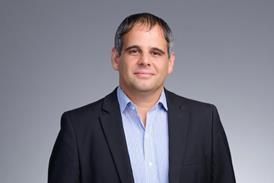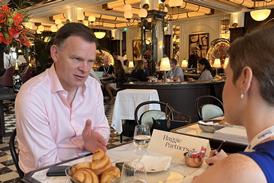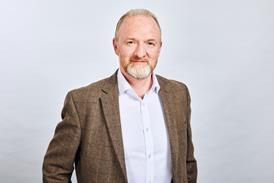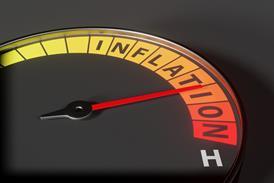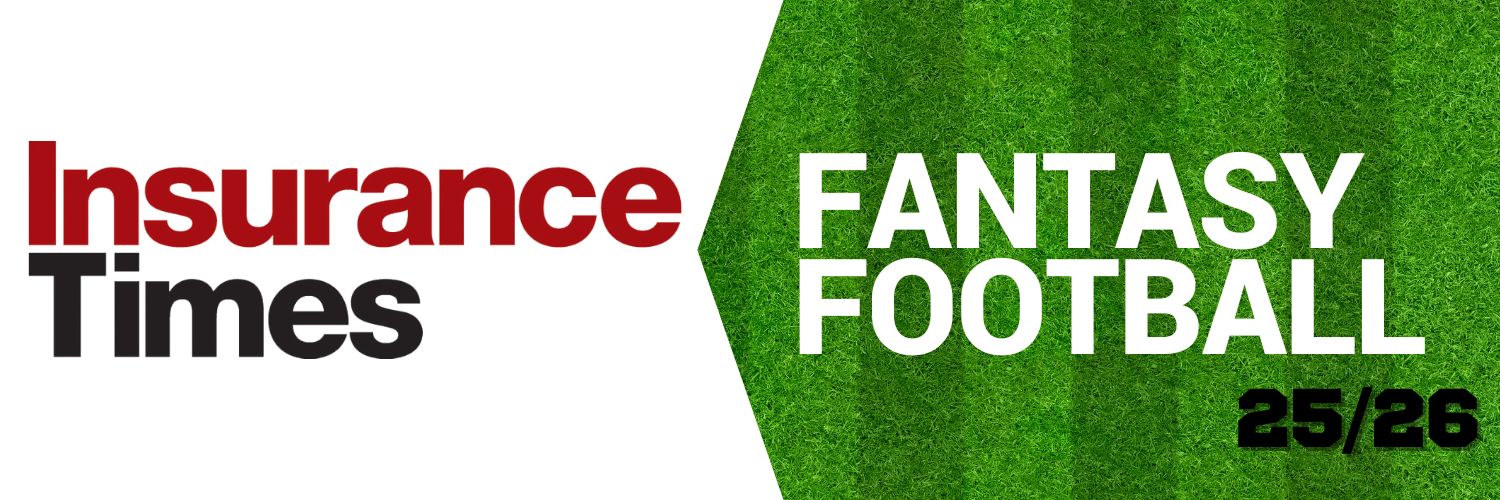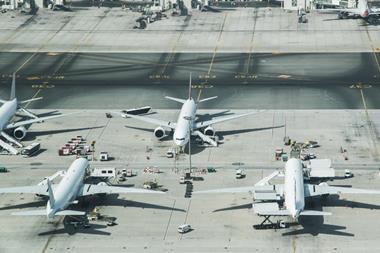Standard & Poor's non-life insurance rating outlook
Standard & Poor's non-life insurance rating outlook
Denmark's non-life insurance market's stable outlook could be undermined by lack of rate increases
Standard & Poor's has a stable outlook on the Denmark non-life insurance market, despite it suffering its largest ever catastrophe loss from windstorm Anatol, which hit Denmark in December 1999. A stable outlook indicates that most insurers' financial strength ratings are unlikely to change. The market's stability could, however, be undermined if premium rate increases are not implemented.
Despite a loss which now stands at Danish krone (DKr) 14bn (£1.1bn), solvency levels remain good and few financial strength ratings are likely to change in the short term. The market reported a pre-tax loss in 1999 due to the impact of Anatol; the combined ratio leapt from 100% in 1998 to 115% in 1999.
Nearly all insurers in Denmark had inadequate reinsurance cover in place and consequently suffered what has become known as “unplanned retentions”, some of which were substantial. This has led to a significant deterioration in 2000 results, as the growth in the original 1999 loss has continued after the closing of the 1999 accounts. The future of the market is dependent on the extent to which the market is able and willing to implement premium rate increases, which will be required to pay for much more expensive and much higher levels of reinsurance protection.
One particular concern regarding the successful implementation of rate increases is that the market is showing few signs of consolidation. Many insurers are small and the costs of due diligence and integration are prohibitive in comparison with the value such companies would add to the new, larger parent.
As a result of the potential volatility of the Danish market, arising from the uncertainty of the sustainable increases in rates, the market's stability over the medium term is more likely to come into question than that of any other Nordic market.
The insurance market
Denmark is also home to specialist reinsurers GE Frankona Re, Copenhagen Re, Tryg-Baltica International and KAB International.
Denmark, with a population of around 5.3 million, is a small market in an international context. It has a well developed and mature insurance industry, with some 165 non-life companies (63 limited companies, 76 mutuals and 26 foreign companies) in 1999.
The top five non-life insurance groups in Denmark – Tryg-Baltica, Topdanmark, Codan, Alm Brand and Denmark Sygeforsikring – have a combined market share of 71.5%. Outside of these five, however, the market is fragmented.
There has been some restructuring and merger and acquisition activity involving companies in the Danish market, with the biggest insurers trying to consolidate their position. Most notable was the merger of Unidanmark (owner of Tryg-Baltica) and Finnish/Swedish Meritanordbanken in April 2000 to create Nordea AB, the largest financial services group in the Nordic region.
This merger increased Tryg-Baltica's presence in Finland and Sweden. Tryg-Baltica's presence in Norway was enhanced through the acquisition of Vesta (Norway's third largest insurer), which was completed in December 1999. In 1999, Tryg-Baltica had a 21.8% share of the non-life Danish market. The company also has exposure to the international market, via Tryg-Baltica International in Denmark and Tryg-Baltica International (UK).
Topdanmark has gone through some ownership restructuring, mainly due to the reorganisation of Eureko (a major shareholder of Topdanmark), which was an alliance of eight European insurers. In 2000, Eureko was split into two platforms, a listed company (formed via the merger of Achmea and Banco Comercial Portugues with Eureko) and Eureko Alliance Partners (owned by the listed company and the six remaining insurers including Topdanmark); this entailed Eureko reducing its shareholdings in Topdanmark to nil, most of which was distributed into the equity market. Topdanmark is also planning to buy back its own shares from Danske Bank; it is expected that the existing cooperation agreement involving distribution with Danske Bank will not be affected.
Topdanmark acquired the Danish industrial workers' compensation insurance company, Industriens Arbejdsskadeforsikring, in January 2001. In 1999, Topdanmark acquired the non-life activities of Den Danske Bank in the form of Danica Forsikring and Danske Skade. These companies occupied tenth and 18th positions in the non-life market respectively. Danica Forsikring was subsequently renamed Danske Skade I. For 1999, Topdanmark's market share of the non-life market was 19.5%.
Codan acquired Trygg-Hansa in 1999 from SE-Banken, giving Codan's parent, Royal & Sunalliance, a leading position in the Nordic market. The company also expanded its operations in the Baltic region with the acquisition of Latvian insurer AAS Balta in March 2001, further consolidating its position following the acquisition of Lithuanian insurer Lietuvos Draudimas in June 1999.
Alm Brand acquired the Danish operations of German insurer, Provinzial, in March 2001. The company has exposure to international reinsurance via Copenhagen Re. Codan and Alm Brand had non-life market shares of 13.3% and 9.2% respectively in 1999. In 1999, Skandia's Danish non-life branch operations were transferred to Swedish insurer If P&C, making the latter the eighth-largest non-life insurer in Denmark.
Market features
Distribution
Traditionally, policies have mainly been sold through insurance agents employed by the insurers and local offices, although the role of bank assurers and brokers has become more prominent and these are now effective and recognised distribution channels.
This is reflected in the number of agents, which has dropped from approximately 2,400 in 1997 to approximately 2,100 on September 1 1999. The two insurance brokers associations have 75 members in total. Increasingly insurance products, particularly life products, are being sold through bank branches. Topdanmark's acquisition of the non-life insurance units of Den Danske Bank included a provision that Topdanmark will retain the exclusive rights to sell non-life products through the bank's 400 branch and other distribution channels for five years.
Futhermore, one of the core reasons behind Tryg-Baltica's merger with Unidanmark was the attraction of being able to use Unidanmark's distribution channels.
Insurance packages
Insurance policies are traditionally sold in “packages”, such as the “family insurance” package, a policy that provides cover for a family's house contents, as well as legal aid and third-party insurance for the family members. Business enterprises will often have combined building and contents policies which also cover consequential loss and possibly other risks, for instance professional indemnity and compulsory workmen's compensation insurance.
Compulsory insurances
Compulsory insurances are as follows :
There are no independent policyholder protection funds.
Premium taxes
Insurance companies are taxed in the same way as other companies, which is presently 32% of taxable income, and is set to be reduced to 26% by 2002. Non-life policies are generally subject to stamp duty of DKr0.25 per DKr5000 of sum insured or 12% of premium. However, group policies are exempt from stamp duty. Motor insurers are required to collect a tax of 50% of premiums paid under liability insurance policies or 55% of claims incurred whichever is the greater. Insurers are required to collect a tax on pleasure boat insurance on behalf of the Treasury.
Pools
A flood damage/windstorm compensation scheme exists, whereby all fire insurers in Denmark are required to collect a DKr20 annual fee per fire insurance policy. Insurance pools include a Danish pool for environmental liability insurance and the Nordic Aviation Insurance Group.
Insurance regulation and supervision
The regulatory authority is Finanstilsynet, the Danish Financial Supervisory Authority at:74A Gl. Kongevej, DK-1850 Frederiksberg C, Copenhagen, Denmark
Tel: +45 33 55 82 82, Fax: +45 33 55 82 00
Finanstilsynet@ftnet.
website: ftnet.dk
More important issues are considered by the Insurance Council, formed of representatives of a number of organisations, including the insurance industry.
The Insurance Business Act no. 630 of December 23 1980 (with subsequent amendments), combined with The Consolidated Insurance Business Act no. 684 of August 23 1999, is the principal statute regulating insurers and reinsurers and obliges companies to follow “good accounting practice”. The act is updated on a regular basis in light of domestic developments and EU directives adopted by Denmark and other member states.
All Danish insurers and reinsurers must be licensed by Finanstilsynet and must be mutual or limited companies. Composite insurers are not permitted, although life reassurance may be written by life or non-life insurers. An insurance company is prohibited from engaging in any activities other than those related to insurance.
A foreign limited or mutual company which lawfully transacts insurance business in its country of domicile, and which does not carry on any other activity, may be granted authorisation to write business in Denmark, provided that Finanstilsynet is satisfied that Danish companies can expect to enjoy reciprocal rights in the applicant's home territory. Foreign companies must operate through a branch or general agency in Denmark. Implementation of the Third Insurance Directive meant that, with effect from July 1 1994, insurance companies and branches with approval in one EEA member state are permitted to sell all forms of insurance in Denmark without restriction. Supervision of the company's overall activities in any part of the EEA is conducted by authorities in the country of domicile.
Insurance companies must prepare annual financial statements and, for those with subsidiaries, consolidated financial statements. These statements must be audited by at least one state-authorised public accountant. The company must present the following:
All material accounting policies adopted in the preparation of the accounts must be disclosed. The annual report of management must include the following :
Audit reports must be filed with the Authority.
Besides the annual financial statements, various detailed information on business written must be returned to the Authority, categorised by class of insurance and giving details on the calculation of premiums and claims reserves as well as the required minimum solvency margin. In addition, detailed information on assets and liabilities must be filed. Each year, the Authority publishes and distributes a summary of this information.
Finanstilsynet has the following powers :
Reinsurance cover of insurance companies is subject to Finanstilsynet's control. Finanstilsynet has the authority to require an increase in the reinsurance cover if deemed necessary.
General
The Scandinavian country of Denmark covers an area of 16,629 square miles (43,069 sq. km) and has a population of approximately 5.3 million, with the capital city, Copenhagen, accounting for about a quarter of the population. The currency is the Danish Krone (DKr). £1 = DKr12.24 as at December 31 2000.
Rationale
The ratings on the kingdom of Denmark reflect its formidable track record of robust macroeconomic policies and structural reform.
Years of prudent fiscal policies, sustaining general government surpluses and a declining debt burden underpin Denmark's low inflation and stable currency. A general government budget surplus of 2.8% of GDP is forecast for 2001, with further surpluses averaging 2.7% of GDP over the medium term. The general government accounts have remained in surplus for the past four years, and over the past decade, have recorded an average deficit of just 0.8% of GDP (compared with a AAA median deficit of 1.5%).
Although the tax burden remains second only to Sweden among OECD countries, it remains underpinned by an efficient public sector and the almost complete absence of popular support for lowering taxes. Over the medium term, the general government budget is forecast to remain in surplus, sustaining the downward trend in the public debt burden.
The ratio of general government debt to GDP is forecast to fall to 34% by 2005, from a peak of 78% in 1993. At the same time, general government external debt has declined to an estimated 53% of exports in 2000, from 100% in 1993.
In addition, the introduction of fully funded labour market-related pension schemes has resulted in the accumulation of pension assets equivalent to nearly 100% of GDP, which are outside the general government balance sheet.
The sustained decline in the public debt burden, coupled with a robust pension system, provides ample fiscal flexibility to meet the challenge of an aging population.
Successive labour market reforms have strengthened labour market flexibility and succeeded in lowering unemployment by 7.5 percentage points since 1990, to a forecast of 4.9% in 2001.
Moreover, Denmark's competitive position remains strong, with growth in unit labour costs averaging 1.7% over the past decade, compared with an average 2.3% in the EU and 2.6% among OECD countries, which has sustained solid export growth and modest current account surpluses.
Outlook
Over the medium term, Denmark's extremely strong credit standing should remain secure against nearly all foreseeable downside economic, political, and financial risks.
The wealth and diversity of the Danish economy, coupled with its integration into the European economy, should enable the country to weather any external shocks and significant changes to its economic environment without major strain to its factor markets or to the country's overall economic stability.
Denmark insurance analyst contacts:
David Laxton London 020 7847 7079
Simon Marshall London 020 7847 7080










